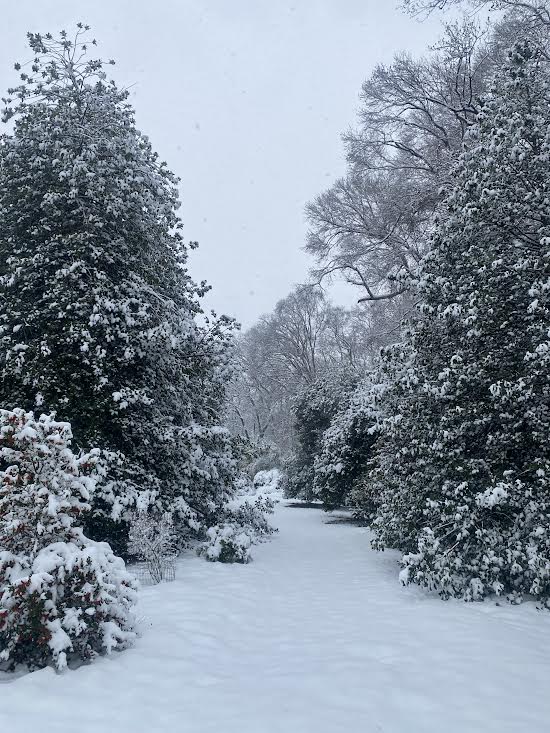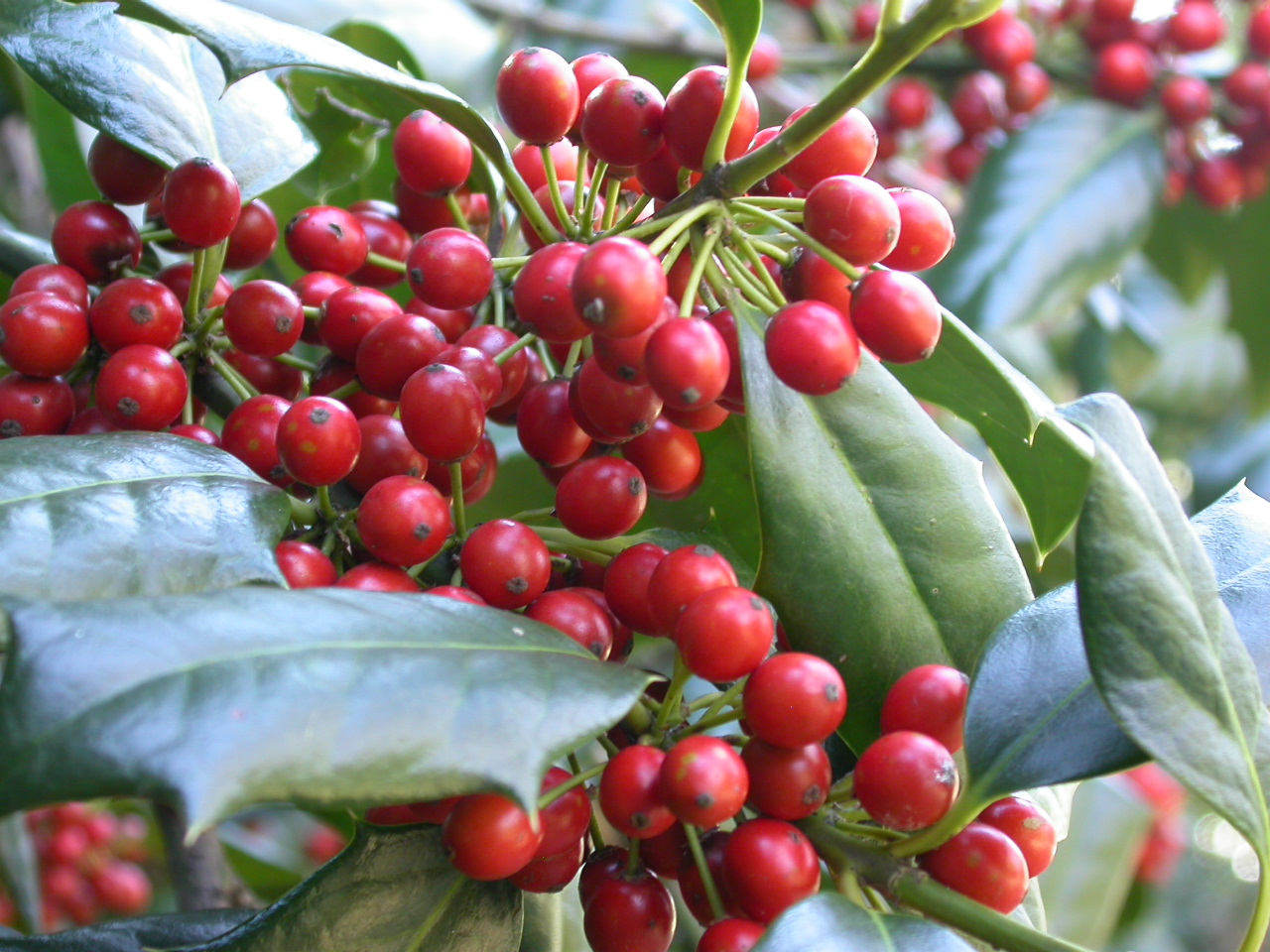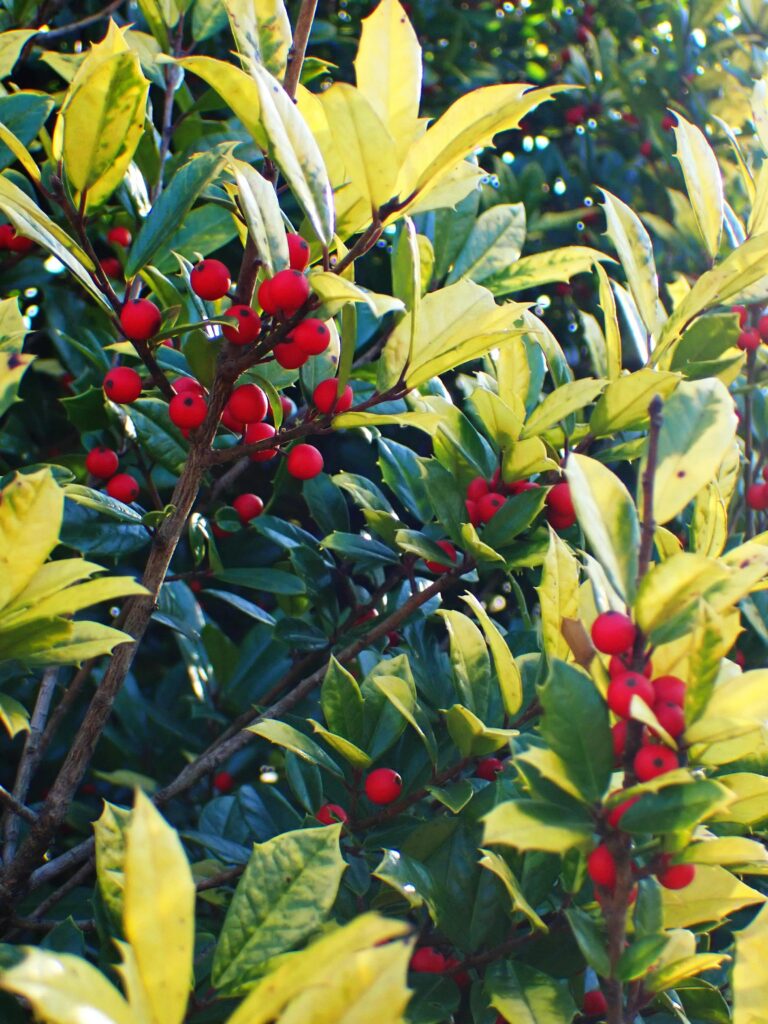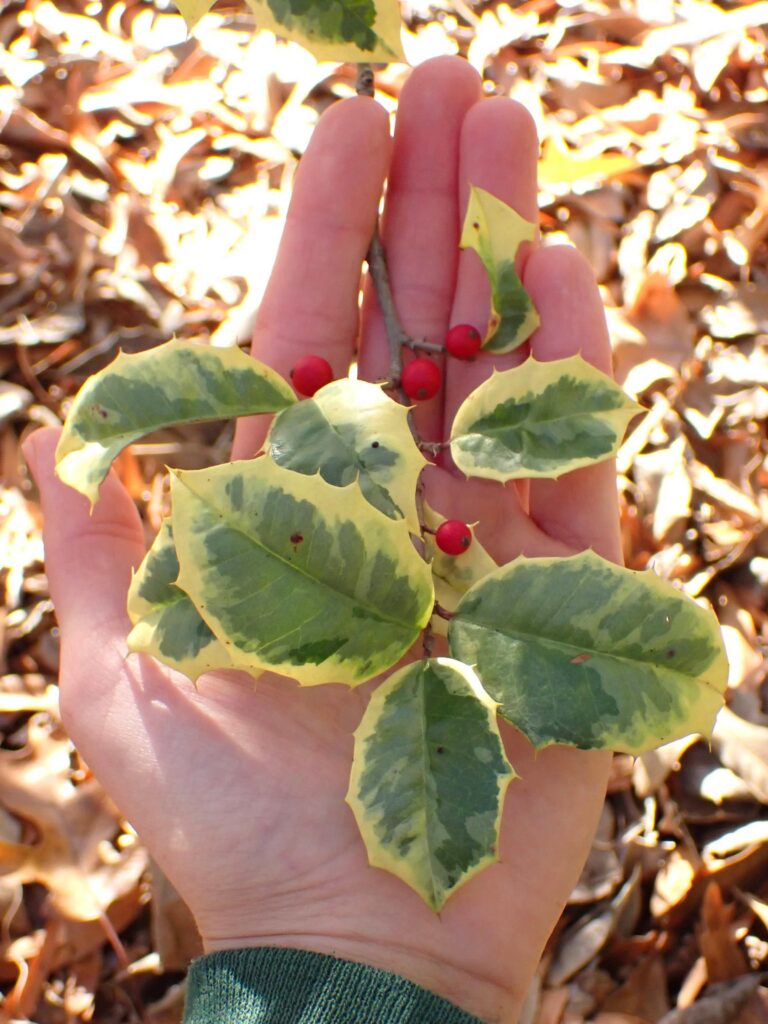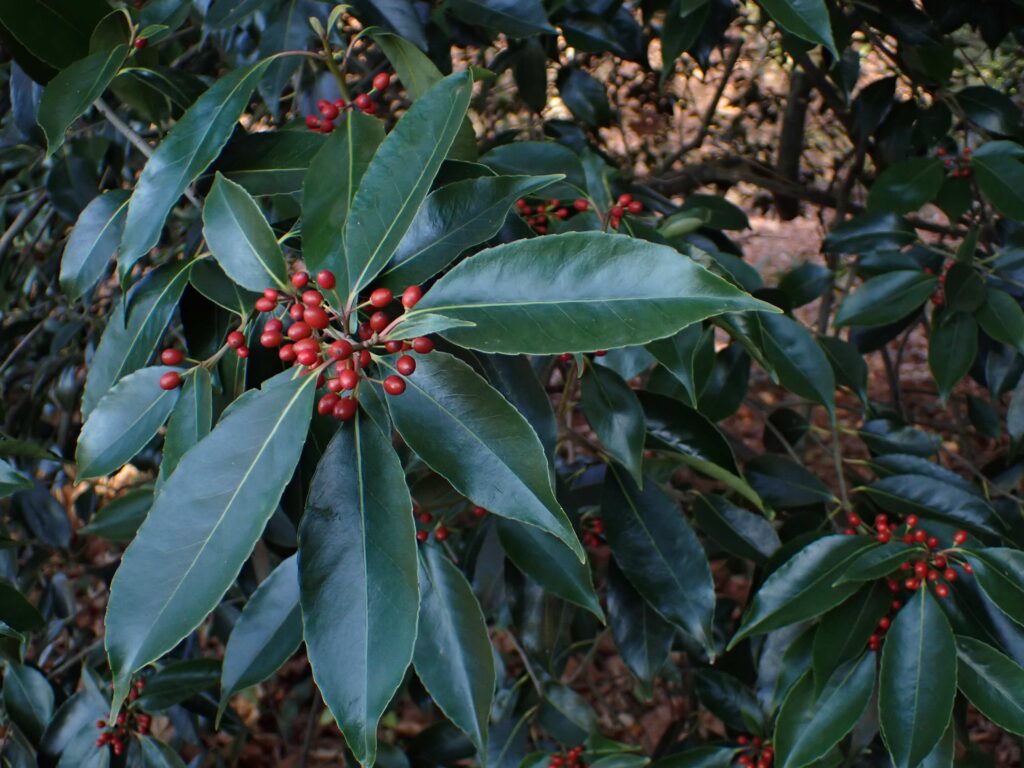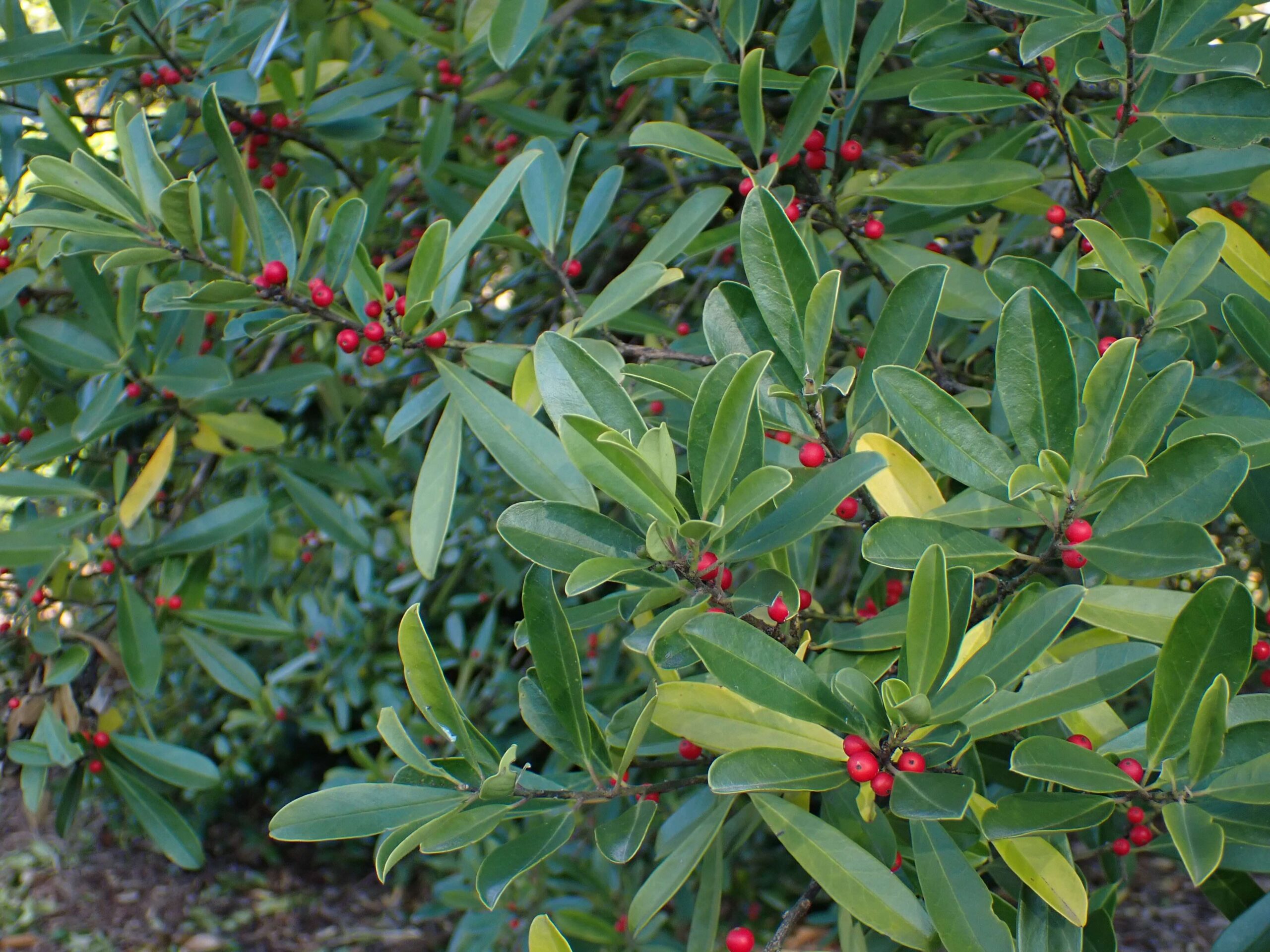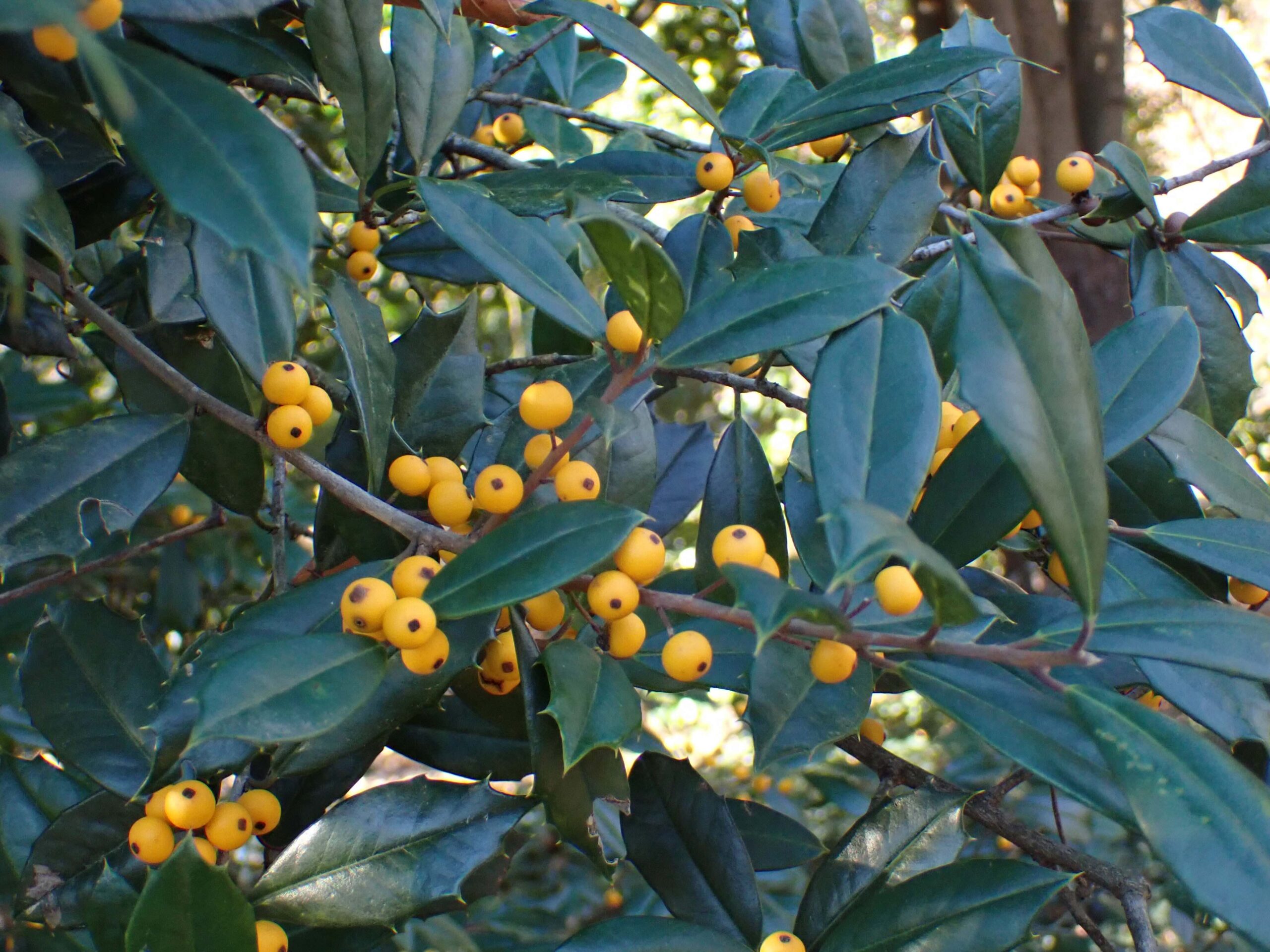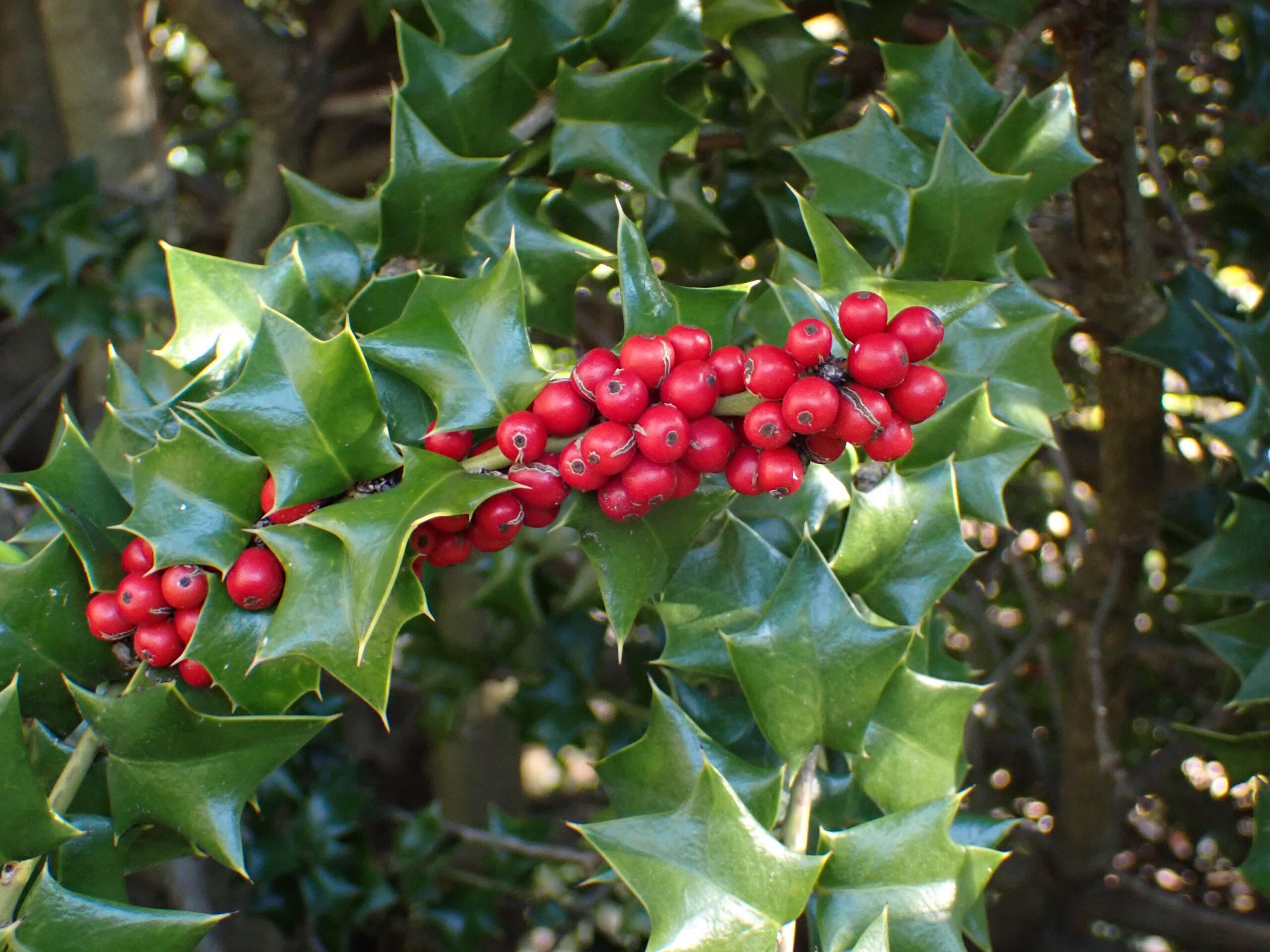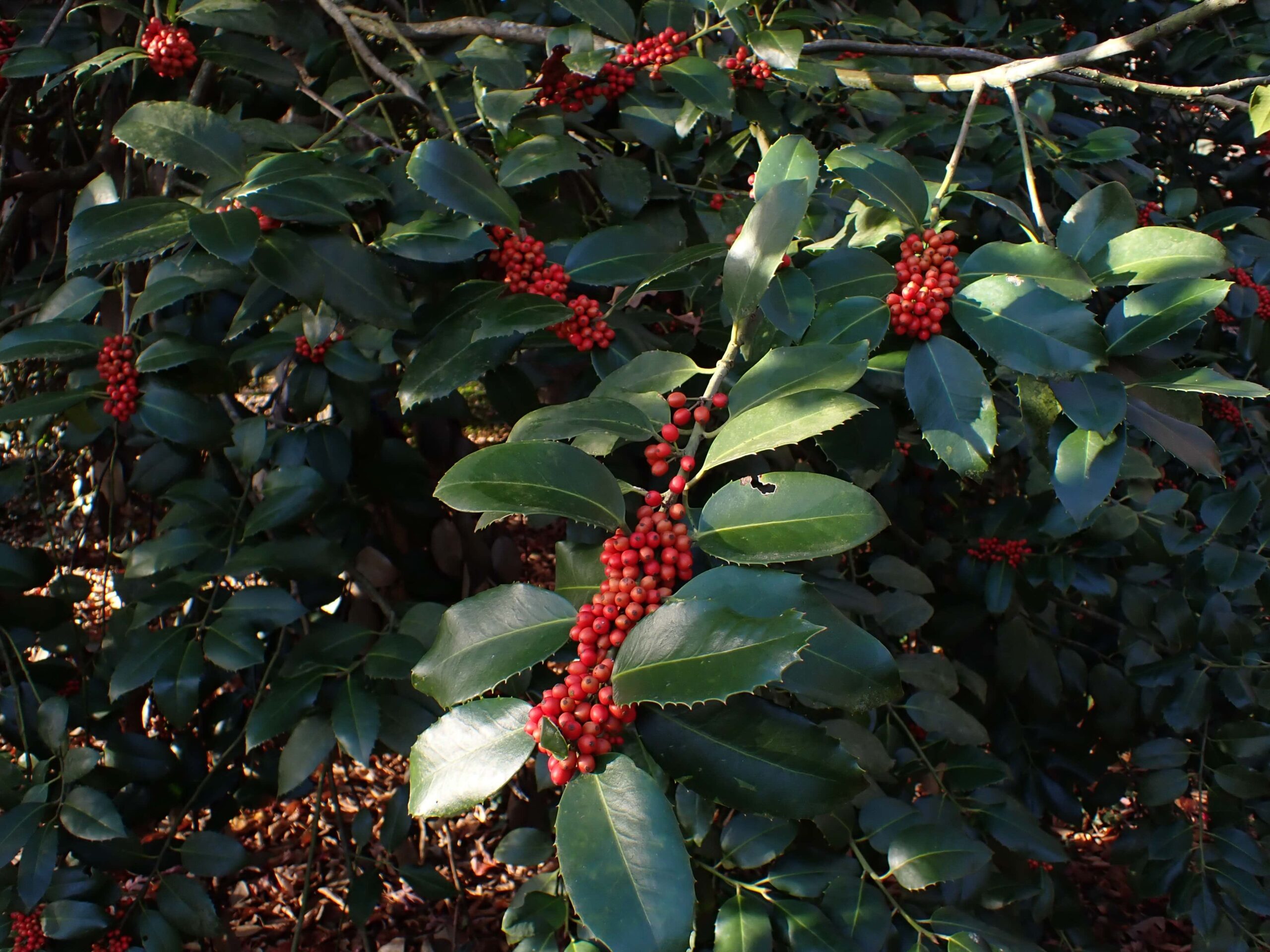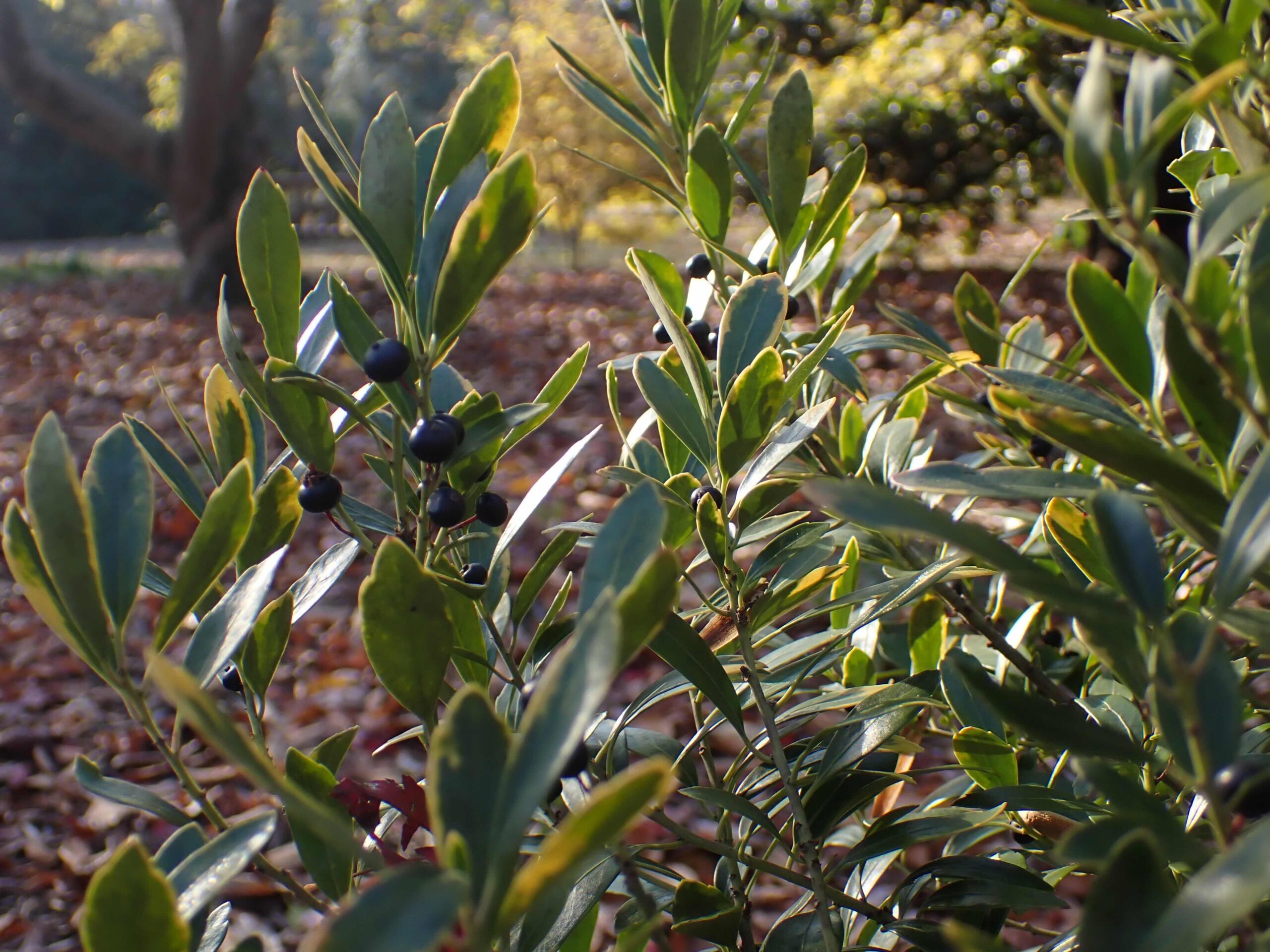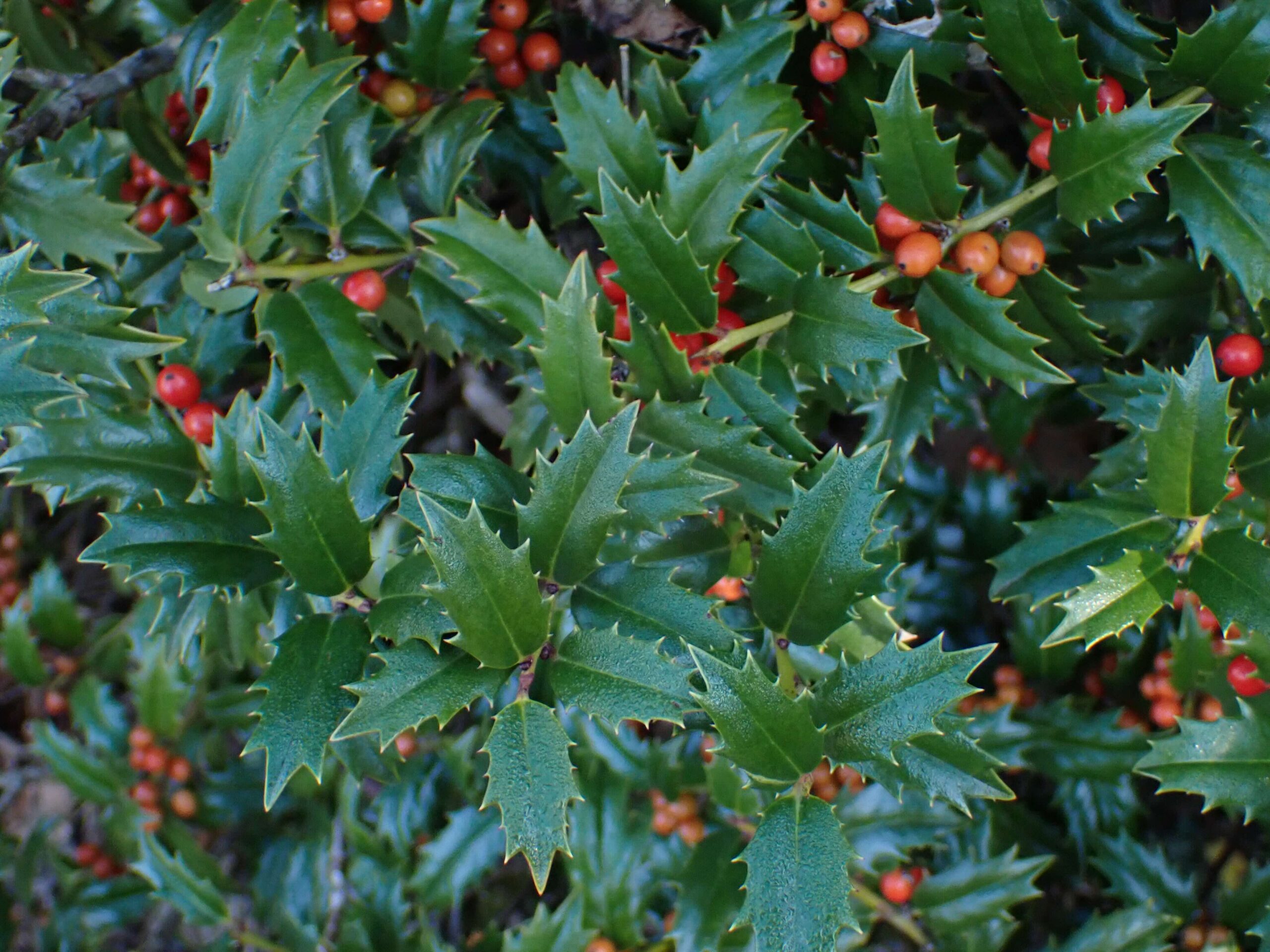
Illuminating the ‘Ilex’
The U.S. National Arboretum’s Holly Collection is a nationally and internationally recognized research and display holly collection. Designated a National Holly Arboretum by the Holly Society of America, it holds some of the Arboretum’s earliest plantings dating back to 1943. Many of the original plantings stand full-grown today, some towering 60 feet tall, like the American Holly, Ilex opaca ‘Freeman’. This striking, dense columnar tree is located along the new American Holly Trail right before the bamboo entrance to China Valley.
“Part of the value of our collection is its diversity,” says Joe Meny, the horticulturist who oversees the Holly and Magnolia Collections as well as the Gotelli Conifer Collection at the National Arboretum. “We have a lot of representative material from around the world and we also have cultivars that we know are true to type. There are varieties that are not available in the nursery trade anymore. We have living examples of those plants. So, if nurseries or researchers want to use them in breeding, they’re here. We’re still actively collecting holly domestically and have a really good representation.”
The collection contains about 1,400 individual living plants in the gardens representing nearly 300 unique taxa. On one end of the spectrum is the nursery mainstay Ilex ‘Nellie R. Stevens’. This is a hybrid of the English holly Ilex aquifolium and the Chinese holly Ilex cornuta, and is known for its relative hardiness and consistent habit. On the other end of the spectrum is the unexpected Ilex paraguariensis — or yerba mate — a subtropical evergreen holly native to forests in South America from which the popular tea-like drink is made.
“From the ornamental horticulture perspective, hollies are interesting to us because there is so much genetic diversity. There are nearly 600 species of holly adapted to temperate and tropical ecosystems around the world,” says Dr. Todd Rounsaville, Research Horticulturist, who leads the USNA Germplasm Program. Some hollies are deciduous and shed their fruits before winter. While evergreen hollies enliven the winter landscape with bright berries and glossy leaves, offering a beacon of hope for regeneration during the coldest months of the year. These landscape stalwarts are also a vital food source for wildlife when other sources are scarce. To create a winter fruit garden, there are many hardy Ilex staples to choose from: large or dwarf, conical tree or round shrub. “We’re constantly exploring genetic material for breeding improved varieties that are better adapted to changing environments and resistant to diseases.”
Dr. Henry T. Skinner, who served as Director of the National Arboretum between 1952 and 1972, appreciated the importance of the holly as a landscape plant. In addition to designing the collection’s first landscape features, Skinner launched decades of collection, research, and holly breeding at the USNA.
The Arboretum’s research teams have played a significant role in developing new selections of holly over the years, releasing 30 holly cultivars to the American public through the nursery trade. Many of them are still popular today, including: Ilex ‘Cherry Bomb’, a slow-growing evergreen shrub, small and rounded, with glossy, nearly spineless, leaves; Ilex crenata ‘Sky Pencil,’ a unique form of Japanese holly that was propagated from a donation from a private collection in Japan; the deciduous Ilex ‘Sparkleberry,’ which sports eye-catching brilliant red berries on bare branches when its leaves drop in the autumn.
Molly Patton, the USNA horticulturist who tends the Holly and Magnolia Collections, wants people to know about the more unique varieties. “There’s Sunny Foster, a Foster Holly hybrid released by the Arboretum. When grown in full sun, the leaves are variegated and vibrant yellow. It intensifies as the leaves mature. It’s almost ombré, green and yellow, with these bright red berries. It’s a beautiful tree. The Steward’s Silver Crown has leaves that look like a watercolor painting: silver, yellow, and green.” There are also hollies that you may not even guess are hollies. Ilex purpurea has long, deep green, lance-shaped leaves that are almost spineless. Its flowers are a shade of pink or purple, deviating from the genus’ usual white. The black-berried Ilex glabra ‘Gold Mine’ distinguishes itself from other inkberry cultivars with its gold-edged leaves and dense, compact growth. (You’ll find these specimens in the Holly and Magnolia Collections.)
From left: Ilex x attenuata ‘Sunny Foster’, Ilex opaca ‘Steward’s Silver Crown’, and Ilex purpurea. Photos by Molly Patton, courtesy of the U.S. National Arboretum. Click each photo to view in full screen.
The living plants in the Holly Collection are just one element of the National Arboretum’s valuable Ilex germplasm collections, which also include wild-sourced seeds and more than 10,000 preserved specimens in the Arboretum’s Herbarium. The herbarium represents more than half of all named hollies and 1,082 cultivars from around the globe. All are made freely available to scientists around the world via the Arboretum’s newly-released Biocollections Portal.
Rounsaville and his colleagues at the USNA Germplasm Program work to create a diverse genetic resource collection of woody plants like hollies. They track down genetic traits such as disease resistance, drought tolerance, or unique leaf and fruit forms that may be useful to plant breeders, scientists, and conservation professionals. These traits may not be obvious at the time of collection, but by preserving living plants and seeds, the germplasm will be readily available to address unanticipated future needs. “Our gene bank serves the U.S. nursery and landscape industry,” Rounsaville notes. “We work closely with industry professionals to determine what species or traits are desirable to meet contemporary needs, and then conduct germplasm collecting expeditions to introduce that material to the public.”
The National Arboretum’s Holly Collection holds a huge diversity of holly varieties. From top left: Ilex cassine, Ilex x attenuata ‘Longwood Gold’, Ilex cornuta ‘Bostic’, Ilex x koehneana ‘Agena’, Ilex glabra ‘Gold Mine’, Ilex ‘Conot’ PATRIOT. Photos by Molly Patton, courtesy of the U.S. National Arboretum. Click each photo to view in full screen.
The biggest obstacles to finding more genetic variation are collecting and the time it takes to grow hollies from seed.
“It can take years to germinate holly seeds and it may not be cost-effective for growers to spend the time developing procedures for germination. Some of our research is focused on understanding what are the necessary conditions to break dormancy in U.S. native holly seeds collected from wild populations.”
Through its seed bank, living collections, and live plant distributions to nurseries and botanic gardens, the Arboretum also serves as a backup if a plant population is threatened by a disease outbreak or a natural disaster.
Rounsaville is currently leading the process to have the Arboretum’s Ilex Collection nationally accredited by the American Public Gardens Association (APGA). With the APGA accreditation comes added recognition of the USNA’s enduring commitment to preservation. If accredited, the USNA’s collection would become the fourth public garden Ilex collection to achieve this status. Participating institutions compare holdings and identify duplications and gaps, to efficiently use available resources and strengthen collections through collaboration instead of working in isolation.
The National Arboretum’s vast array of hollies can be found throughout its 451-acre campus. The greatest concentration is located in the Holly and Magnolia Collections (a 10-acre planting area along Holly Spring Road NE and Hickey Hill Road) and the Asian Collections. Additional plantings are also sprinkled throughout the Fern Valley Native Plant Collection, Azalea Collections, National Herb Garden, and National Boxwood Collection. You can use the online Arboretum Botanical Explorer to discover the location of hollies and other plants on the grounds of the National Arboretum.
Additional resources:
American Holly: An Overlooked National Treasure (Arbor Friends, Winter 2018)
U.S. Forest Service Ilex opaca (American Holly) fact sheet
Bridget DeSimone is a communications consultant and writer for Friends of the National Arboretum. She is an experienced public relations professional and journalist who has worked extensively with scientific researchers and nonprofit organizations.


